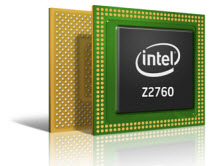Windows 8 'Clover Trail' tablets delayed until 2013


The holiday season is usually a great time for PC OEMs, and this one should be doubly so given that it comes hot on the heels of a new Windows release. But a fumble with driver certification means that Santa won't be leaving many Windows 8 "Atom" tablets under the tree.
It seems that Dell and HP have both pushed back the launch of Windows 8 tablets running Intel's new power-efficient Atom Z2760 "Clover Trail" processor until January. According to InformationWeek, Dell's Latitude 10 and HP's Envy x2 convertible are affected.
A search of online retails suggests that the only Atom Z2760-powered tablet you can buy right now is the Acer W510, which also appears to be in short supply.
The Atom Z2760 is a 1.8GHz dual-core x86 CPU built using Intel's 32-nanometer high-k process. The primary feature that it brings to the table is better battery life.
The problem appears to be down not to the hardware but to drivers. Back in early October it was reported that Intel had yet to deliver power management software for its "Clover Trail" processors to Microsoft for approval. This, according to sources, would likely delay the release of hardware, and according to supply chain sources, it is this delay in getting Windows Hardware Quality Labs (WHQL) certification for the drivers -- required before the hardware can go on sale -- which is behind this latest delay.
See also: Does Nokia have a Windows RT tablet in the pipeline?
Missing the critical holiday season will be bad for hardware OEMs, and is liklely to hand more tabler market share to other players, including the iPad and even Surface.
"Clover Trail" introduces two new power management states, called S0i1 and S0i3. S0i1 is described as an "active" sleep state that kicks in when the user stops using the device but hasn't yet put it to sleep, while the S0i3 sleep state is called a "connected" sleep state and this allows the device to enter a state where it consume microwatts of power but can still wake up in a matter of milliseconds.
These new sleep states mean that the standby battery life of Z2760-powered hardware can be as much as three weeks.
Image source: Intel.